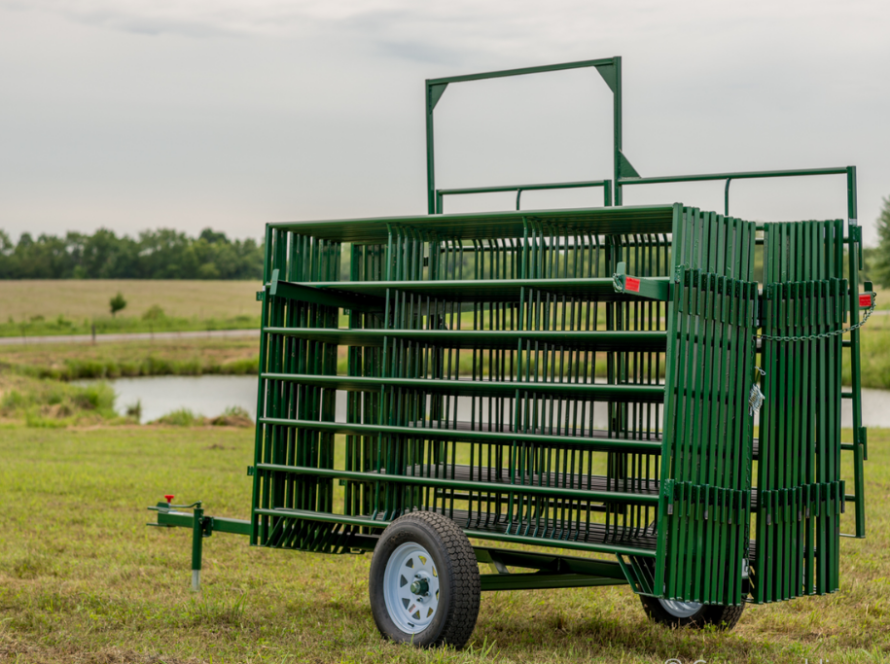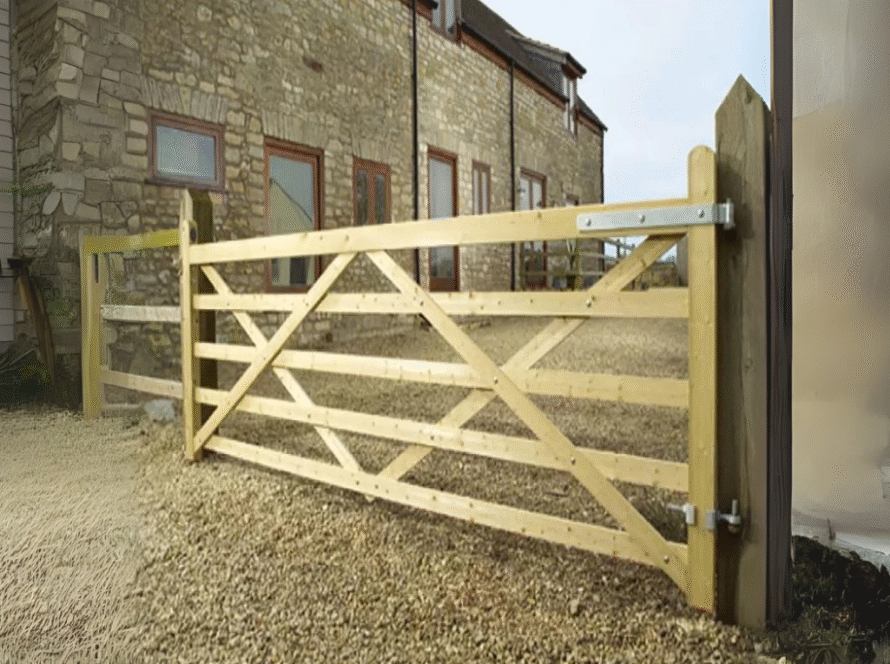Introduction
Designing a livestock shelter is one of the most important decisions a farmer or rancher will make to ensure the well-being of their animals. Whether you’re housing cattle, goats, sheep, or horses, the right shelter protects your livestock from harsh weather, provides a safe space to rest, and can even help increase productivity and comfort. But with so many options available, how do you know what kind of shelter is best for your needs?
This guide will walk you through expert tips and considerations for designing your ideal livestock shelter. We’ll explore different types of shelters, including metal livestock shelters, portable livestock shelter kits, and even diy portable livestock shelters. Whether you’re looking for inexpensive livestock shelters or heavy-duty livestock corral shelters, we’ve got you covered. Let’s dive into the essential elements of shelter design, helping you choose the best option for your animals and farm!
1. Understanding Your Livestock’s Needs
Before you start building or purchasing a livestock shelter, it’s important to assess your animals’ specific needs. Different types of livestock have varying shelter requirements based on their size, behavior, and the climate in which they live.
Temperature Regulation
Animals like horses and cattle can be sensitive to extreme temperatures, so ensuring your livestock shelter provides proper protection from the elements is essential. For example, livestock shade shelters are a great option during the summer months to shield your animals from excessive heat. Meanwhile, during colder months, you may want to consider a 3-sided livestock shelter or heavy-duty livestock corral shelter that provides adequate wind protection.
Space Requirements
Make sure to provide enough space for your livestock to move freely. For larger animals, such as cattle or horses, a large livestock shelter or livestock field shelter will be necessary. Smaller animals, like goats or sheep, may be perfectly comfortable in a small livestock shelter or a portable livestock shelter if space is limited.
Shelter Style
Depending on your farming goals, you may need a temporary or permanent shelter. A temporary livestock shelter, such as a portable livestock shelter or diy portable livestock shelter, can be easily moved and is often more affordable, making it ideal for farms with changing conditions or if you’re just getting started. If you’re looking for something more permanent, a steel livestock shelter or metal livestock shelter may be the way to go, providing long-lasting durability.
2. Types of Livestock Shelters: Choosing the Right One for You
There are several types of livestock shelters available, each with its own advantages and use cases. Here’s a breakdown of the most common options:
Livestock Enclosure Shelters
A livestock enclosure is a simple but effective shelter that provides a defined area for your animals. These enclosures are typically made with panels and can be expanded or adjusted as needed. Livestock panel shelters are a popular choice, offering sturdy, movable walls that can be customized for different animals and environments.
Metal Livestock Shelters
If you’re looking for durability and longevity, a metal livestock shelter is a great investment. These shelters are often made from galvanized steel or other corrosion-resistant materials, ensuring they can withstand heavy winds, snow, and rain. A steel livestock shelter can provide year-round protection for your animals, making it a solid choice for all climates.
Small Livestock Shelter
For farms with limited space or for smaller animals like goats, sheep, or poultry, a small livestock shelter can be the perfect fit. These shelters provide the essential protection your animals need without taking up too much room. If you’re working with a tight budget, inexpensive livestock shelters made from wood, metal, or even pallet livestock shelters are great options for keeping costs down while providing sufficient coverage.
Portable Livestock Shelters
If you need flexibility in your shelter design, a portable livestock shelter may be exactly what you need. These shelters are easy to move, allowing you to shift them around your property based on your livestock’s needs or seasonal changes. Portable livestock shelter kits and portable livestock shelter plans can be purchased online or at local farm supply stores, making them an accessible option for many.
Livestock Shade Shelters
During the hot summer months, a livestock shade shelter will keep your animals cool and comfortable. These shelters are particularly useful for animals like horses or cattle, which can struggle in high temperatures. Shade shelters are often constructed with open sides to allow for airflow while providing adequate coverage to protect from direct sunlight.
Prefab Livestock Shelters
If you’re looking for a quicker and easier solution, prefab livestock shelters are an excellent option. These pre-made shelters are designed to be assembled quickly and are often made from materials such as metal, wood, or plastic. Prefabricated designs offer versatility and can be customized based on your livestock’s size and the climate in your area.
3. Essential Features for Your Livestock Shelter
When designing your shelter, keep in mind the key features that will ensure your animals’ safety and comfort:
Ventilation
Proper ventilation is crucial for keeping your animals healthy. Livestock dome shelters and livestock shelter kits often include open-air designs or ventilation windows to allow for air circulation. This reduces the risk of respiratory issues, especially in damp or hot environments. If you’re building your shelter, make sure to include sufficient airflow.
Durability
Whether you’re building a diy livestock shelter or purchasing a pre-built option, durability should be a top priority. Heavy-duty livestock corral shelters and metal livestock shelters are ideal for long-term use, withstanding harsh weather conditions and daily wear and tear. Always opt for strong materials, such as steel or reinforced plastic, to ensure the shelter lasts.
Waterproofing
Your shelter should protect your livestock from the rain, so waterproofing is essential. Look for shelters with a roof designed to repel water or consider adding a tarp or plastic cover if your shelter doesn’t already provide this protection.
Protection from Predators
A well-designed shelter should also protect your livestock from predators. Livestock shelter ideas often include fences or gates that help keep animals safe from external threats. Adding sturdy fencing around the shelter will add an extra layer of security.
4. DIY Livestock Shelter Ideas
For those who enjoy a good DIY project, there are plenty of DIY livestock shelter plans available online to help you create the perfect home for your animals. Free livestock shelter plans can be found on farm websites, offering step-by-step instructions for building everything from a small livestock shelter to a temporary livestock shelter.
You can even build a pallet livestock shelter using recycled materials to keep costs low while providing adequate protection for your animals. DIY portable livestock shelter projects can be simple, cost-effective, and easily moved, giving you flexibility in your farm layout.
5. Cost-Effective Livestock Shelter Solutions
Building or purchasing a livestock shelter doesn’t have to break the bank. If you’re on a budget, consider options like cheap livestock shelters, small livestock shelter plans, or temporary livestock shelters that offer essential protection without the hefty price tag.
Additionally, you can opt for a plastic livestock shelter, which is often more affordable than metal or wood shelters and can be just as effective in providing your animals with shelter from the elements.
6. Maintenance and Upkeep of Your Livestock Shelter
Once you’ve selected or built your livestock shelter, ongoing maintenance is crucial for its longevity and effectiveness. Here are some tips to keep your shelter in top condition:
- Inspect Regularly: Check the roof, walls, and structure for signs of wear and tear, especially after storms or extreme weather.
- Clean the Shelter: Regularly clean the inside of the shelter to prevent the buildup of manure, which can cause health issues for your animals.
- Repair as Needed: Fix any leaks, cracks, or broken parts as soon as you spot them to avoid more costly repairs down the line.
- Replace Bedding: Make sure the bedding inside the shelter remains clean and dry to ensure your livestock is comfortable.
Conclusion
Designing and building the perfect livestock shelter is a key part of keeping your animals healthy, happy, and productive. Whether you’re interested in a diy portable livestock shelter or looking for a heavy-duty livestock corral shelter, the right shelter can make a significant difference in the quality of life for your livestock. By considering factors such as size, material, ventilation, and budget, you can create a safe, functional, and comfortable environment for your animals. With the expert tips and shelter ideas outlined in this guide, you’re well on your way to creating your ideal livestock shelter!
FAQs
What is the best type of livestock shelter for horses?
A horse livestock shelter with solid walls and a sloped roof for rain runoff is ideal, offering shade and protection from the elements.
Can I build a livestock shelter myself?
Yes, there are plenty of DIY livestock shelter plans available online, and you can even use pallet livestock shelters as a cost-effective solution.
What are the benefits of a metal livestock shelter?
Metal livestock shelters are durable, weather-resistant, and require less maintenance compared to wood or plastic shelters.
Are portable livestock shelter kits easy to assemble?
Yes, portable livestock shelter kits are designed for easy assembly and can be moved around your property, offering flexibility for your animals’ needs.
How do I keep a livestock shelter cool in the summer?
Use livestock shade shelters or provide open sides for ventilation to allow airflow and reduce heat buildup in the shelter.



